Introduction
As the world becomes increasingly aware of environmental issues, the quest for sustainability has touched every aspect of our lives, including how we nurture our gardens. With spring heralding a time of renewal and growth, it's the perfect season to embrace sustainable gardening practices. Sustainable gardening isn't just a trend, but a thoughtful approach to nurturing nature while relishing its beauty. Welcome to the world of Plantology, your trusted partner in creating a garden that's eco-friendly, fruitful, and beautiful.
In this blog, we'll delve into the core concepts of sustainable gardening, impactful planning strategies, and practical tips to transform your spring garden into an ecological haven. By doing so, you'll not only reduce your carbon footprint but also promote biodiversity, conserve resources, and even improve your personal well-being. Let's embark on this green journey together!

I. Understanding Sustainable Gardening
Definition and Importance
Sustainable gardening is the practice of designing, nurturing, and maintaining a garden in a way that has a minimal impact on the environment. Its principles are rooted in using resources thoughtfully, conserving water, promoting biodiversity, and reducing waste. By adopting these practices, gardeners contribute to the health of the planet while creating aesthetically pleasing landscapes.
The benefits of sustainable gardening extend beyond the environment. Personally, this practice can offer health benefits by encouraging physical activity and reducing exposure to synthetic chemicals. Economically, sustainability can lead to savings through reduced water usage, minimal pest control expenses, and efficient energy utilization.
Environmental and Personal Benefits
Environmentally, sustainable gardening enhances biodiversity by providing habitats for various species of insects, birds, and microorganisms. Techniques like composting enrich the soil, reducing the need for chemical fertilizers. Plants in sustainable gardens are typically more resilient to pests and diseases, further minimizing the need for chemical interventions.
On a personal level, engaging in sustainable gardening can promote mental tranquility. The act of gardening reduces stress, increases exposure to sunlight, and connects individuals with nature. Moreover, the sustainable approach encourages self-reliance by enabling gardeners to grow their food, leading to both economic savings and health benefits.
II. Planning Your Sustainable Spring Garden
Choosing the Right Plants
The cornerstone of a sustainable garden is selecting plants suited to your local climate and soil conditions. Native plants require less water, are accustomed to local pests, and can enhance the native biodiversity.
Native and Drought-Resistant Plants
Start by incorporating native species that naturally exist in your climate. Consider the Agapanthus Lily of the Nile (Blue) for its stunning blooms and adaptability to various soil types. Drought-resistant plants like Agave Blue and Agave Desmettiana Variegata are perfect for regions with limited water availability.
Companion Planting
By grouping plants with complementary characteristics, you can promote healthier growth and reduce pest infestations. For example, pairing aromatic herbs like rosemary with vegetables can deter pests while enhancing flavor growth. Understanding these symbiotic relationships can lead to a thriving garden ecosystem.
Designing with Biodiversity in Mind
Diversity is key to a sustainable garden. By planting a variety of species, you create a balanced ecosystem that supports wildlife and reduces vulnerability to pests and diseases.
Layered Planting Techniques
Consider layering your garden with different plant heights and types. Tall trees and shrubs like the Alexander Palm create shade and habitat, while ground covers minimize soil erosion and maintain moisture.
Pollinator Gardens
To support bees, butterflies, and other pollinators, introduce plants with a succession of blooms throughout the growing season. Native wildflowers and nectar-rich plants ensure that your garden contributes to the wider ecosystem while enhancing its visual appeal.

III. Sustainable Gardening Practices
Water Conservation Techniques
Efficient water use is a pillar of sustainable gardening. By implementing smart watering techniques, you can conserve water and reduce utility bills.
Drip Irrigation
Invest in a drip irrigation system to deliver water directly to the plant's root zone, reducing evaporation and ensuring efficient hydration. This targeted approach minimizes water waste compared to traditional overhead sprinklers.
Rainwater Harvesting
Install rain barrels or other collection systems to harvest rainwater. This method not only reduces runoff but also provides an eco-friendly water source for your garden.
Soil Health and Management
Healthy soil is the foundation of thriving plants. Sustainable soil management focuses on maintaining its fertility naturally.
Composting
Create a compost pile with kitchen scraps, yard waste, and other organic materials. Over time, these materials break down into nutrient-rich compost that can improve soil quality and reduce waste sent to landfills.
Mulching
Apply organic mulch to suppress weeds, retain moisture, and improve soil structure. This practice mimics natural processes that occur on the forest floor, contributing to a balanced and healthy garden ecosystem.
Integrating Wildlife-Friendly Features
Encouraging wildlife into your garden enhances its ecological value and adds life and movement to the landscape.
Birdhouses and Feeders
Install birdhouses and feeders to attract various bird species. Birds help control pests and can bring a sense of joy with their songs and colors.
Water Features
Consider adding a small pond or water bath to support amphibians and insects. Even a simple water feature can become a focal point for wildlife seeking water in dry environments.
Pest Management without Chemicals
Avoid chemical pesticides by using natural and integrated pest management techniques.
Beneficial Insects
Introduce beneficial insects like ladybugs and predatory beetles that feed on common pests. Encouraging these allies helps maintain a balanced ecosystem and reduces the need for chemical interventions.
Companion Planting for Pest Control
Use plants like marigolds and nasturtiums to repel insects naturally. Companion planting can be an effective strategy for organic pest management.
IV. Creating an Efficient Garden Layout
Maximizing Sunlight and Shade
Understanding your garden's light dynamics is essential for creating an energy-efficient layout that supports plant health and productivity.
Observing Natural Light Patterns
Take note of sun patterns throughout the day to position plants according to their light needs. For instance, place sun-loving plants like the Agapanthus Lily of the Nile (Blue) in bright areas, while shade-tolerant varieties find shelter under dense canopy regions.
Creating Microclimates
Design your garden with natural microclimates, using features like trees, walls, and water bodies to regulate temperature and wind exposure. These microclimates can extend your growing season and enhance plant resilience.
Incorporating Edible Landscaping
A well-planned edible landscape can be both beautiful and productive, allowing you to grow your food while maintaining aesthetic value.
Herb Gardens
Herb gardens are perfect for small spaces and can be used to complement ornamental gardens. Consider growing aromatic herbs like basil, thyme, and mint, which are easy to cultivate and add flavor to your culinary creations.
Fruit Trees and Bushes
Incorporate fruit-bearing plants wherever possible, such as dwarf fruit trees or berry bushes. These not only provide fresh produce but also contribute to biodiversity and ecosystem health.
V. Promoting a Culture of Sharing and Learning
Community Engagement
Gardening can be a communal activity, fostering connections and shared learning experiences.
Seed Swaps and Community Gardens
Participate in local seed swaps to diversify your plant collection and learn from seasoned gardeners. Community gardens offer space for collaboration, resource sharing, and collective sustainability efforts.
Hosting Workshops
Consider hosting or attending workshops focused on sustainable gardening practices. These events can elevate your knowledge, provide hands-on experience, and connect you with like-minded enthusiasts.
Documenting Your Journey
Keep a garden journal to track progress, successes, and lessons learned. Documentation can serve as a valuable resource for future gardening endeavors and inspire others to pursue similar sustainable practices.

VI. Sustainable Gardening for the Future
Innovations and Trends
Stay informed about the latest innovations and trends in sustainable gardening to continuously improve your practices.
Smart Garden Technology
Embrace technology by integrating smart gardening tools that optimize resource usage. Automated irrigation systems and soil sensors can provide data-driven insights about your garden’s health and needs.
Vertical and Container Gardening
Explore vertical and container gardening to maximize limited spaces. These methods are ideal for urban environments and can create verdant oases even in dense settings.
Commitment to Continuous Improvement
Sustainable gardening is an ongoing journey of learning and adaptation. Stay committed to refining your methods, experimenting with new techniques, and fostering resilience within your green spaces.
Conclusion
Embracing sustainable gardening practices not only nurtures your immediate environment but also contributes to global ecological balance. By thoughtfully planning your spring garden, selecting appropriate plants, and employing resource-efficient techniques, you create a personal sanctuary that respects nature’s boundaries. At Plantology, we support your journey towards sustainability with our curated selection of plants and trees designed to thrive in eco-friendly gardens. Visit our website to browse our collection and find the perfect additions for your sustainable garden.
If you're ready to start your sustainable spring gardening project, consider integrating exceptional specimens like the Agave Blue and Alexander Palm from Plantology. For further inspiration and to explore all our offerings, visit Plantology today!

VII. Practical Guide to Going Beyond – Advanced Sustainable Practices
As we delve deeper into sustainable gardening, the journey extends beyond traditional practices. Advanced gardening techniques not only enhance productivity and ecological value but also refine your skills as a gardener. Let’s explore a few strategies that can transform your sustainable spring garden into an innovative hub of biodiversity and beauty.
Permaculture Design
Permaculture goes beyond mere gardening by integrating agricultural, social, and architectural practices into a holistic system. It focuses on mimicking natural ecosystems to create self-sufficient and sustainable landscapes.
Key Principles of Permaculture
In permaculture design, emphasis is placed on observing natural ecosystems and working with, rather than against, nature. This approach involves stacking functions, where each element in your garden accomplishes multiple roles, such as a tree providing shade, food, and habitat.
Consider planting nitrogen-fixing plants like clover around fruit trees to naturally enrich the soil while reducing the need for synthetic fertilizers. Designing swales along slope contours can catch and distribute rainwater, preventing erosion and creating microhabitats for various species.
Forest Gardening
Forest gardening emulates the layered structure of a natural forest with a seven-layered planting design. This method can be highly productive and biodiversity-rich, providing diverse habitats for wildlife.
Implementing a Food Forest
Begin by establishing the canopy layer with tall fruit or nut trees like chestnut or pecan. Under this, a layer of smaller fruit trees such as apple or cherry can thrive. Below that, shrubs including currants and elderberries add to the bounty, while herbaceous plants like chives and comfrey offer ground cover. The forest floor is completed with root crops and climbing plants like grapes or beans.
The interrelation of different layers promotes efficient use of space, sunlight, and moisture, resulting in a thriving mini-ecosystem that requires minimal intervention once established.
Natural Pest Management
Beyond companion planting, advanced techniques in pest management involve fostering an ecosystem balance where natural predators keep pest populations in check.
Encouraging Predators
Incorporate native plants and flowers that attract predatory insects and birds. Plants such as dill and fennel are known to attract beneficial insects like parasitic wasps, which prey on garden pests. Installing nesting boxes can provide homes for insectivorous birds that patrol your garden.
Understanding and Applying Biological Controls
Familiarize yourself with the concept of biological control by introducing pest-resistant varieties and engaging in crop rotation practices to break pest cycles. Consider the use of biological pesticides that employ natural organisms to suppress pest populations without harming beneficial species.
VIII. Promoting Soil Carbon Sequestration
Carbon sequestration is a significant aspect of sustainable gardening, contributing to global climate moderation by capturing atmospheric carbon dioxide and storing it in the soil.
Improving Soil Carbon Levels
Conserve photo-assimilates through practices like no-till farming, which prevents carbon release during mechanical soil disturbance. Promoting perennial planting allows for consistent carbon storage in root systems. Use biochar, a charcoal-like substance, to amend the soil and increase its carbon storage capacity.
Biochar also enhances soil fertility, water retention, and microbial activity, making it an excellent amendment for sustainable gardens.
Using Cover Crops
Incorporate cover crops such as legumes, rye, or vetch during off-season growth periods. These crops not only help in carbon sequestration, but they also protect the soil, prevent erosion, and improve soil fertility through nitrogen fixation.

IX. Enhancing Resilience with Climate-Adaptive Strategies
Climate change presents numerous challenges, yet adapting gardening practices to changing weather patterns can enhance resilience.
Utilizing Climate-Resilient Varieties
Choose plant varieties bred for climate tolerance, such as heat-resistant or drought-tolerant species. Consider using seeds from organizations dedicated to preserving genetic diversity and resilience, ensuring that your garden thrives in diverse conditions.
Building Resilient Infrastructures
Design raised beds and hügelkultur mounds to adapt to varying climate conditions. These structures not only manage water more effectively but also promote faster warming and allow for extended growing seasons.
Succession Planting
Practice succession planting to make the most of your growing season and spread out harvests. This method involves continuously sowing seeds in succession to ensure overlapping growth periods, maximizing productivity and resilience against adverse weather patterns.
X. Cultivating a Mindful and Impactful Gardening Lifestyle
Beyond physical practices, nurturing a mindset of sustainability and mindfulness is crucial in fostering a long-lasting impact both personally and environmentally.
Intentional Consumption and Usage
Evaluate the lifecycle and environmental impact of gardening supplies, from tools to fertilizers. Opt for recycled or upcycled products, promoting a culture of reduced consumption and responsible resource use.
When selecting plants and seeds, support local nurseries and seed banks dedicated to ecological restoration and conservation efforts.
Mindful Interaction with Nature
Practice mindfulness by observing natural rhythms, wildlife behaviors, and plant responses. This awareness helps develop a deeper connection with your garden, guiding your interventions and aligning them with natural processes.
Engaging in meditation, journaling, or creative activities like drawing or photography within your garden space can enrich your experience and foster a holistic appreciation of your gardening journey.
Educating and Inspiring Others
Normalize sustainable practices by inviting friends, family, and community members to witness your garden transformation. Share knowledge, successes, and setbacks to inspire others in their sustainable endeavors.
Consider organizing garden tours or open-house events to demonstrate the beauty and benefits of sustainable gardening. Using social media platforms can extend your reach and connect you with diverse gardening communities worldwide.

Conclusion: Welcoming a Greener Tomorrow
Sustainable gardening represents a harmonious blend of art, science, and empathy towards nature. Embracing advanced techniques and cultivating a mindful attitude fosters a thriving and resilient garden that benefits both the planet and its inhabitants.
At Plantology, we are dedicated to empowering gardeners in their pursuit of sustainability by providing tools, resources, and plant selections that support eco-friendly initiatives. Let's sow the seeds of change together, foster biodiversity, and nurture a greener, more sustainable tomorrow. For more sustainable gardening selections and tips, visit Plantology and tap into a community committed to ecological stewardship.
Ready to take your sustainable gardening to the next level? Discover Plantology's specially curated plant varieties, tools, and resources available on our website. Transform your garden into an ecological haven, and by doing so, contribute to a healthier, more balanced ecosystem that nurtures future generations.

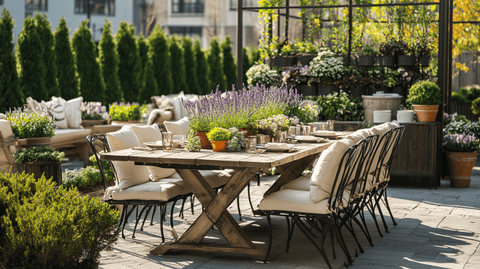


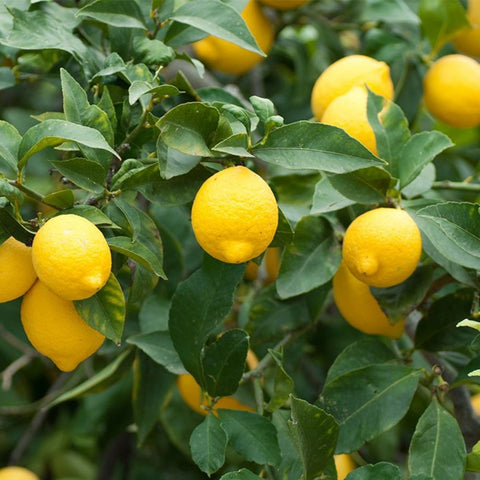



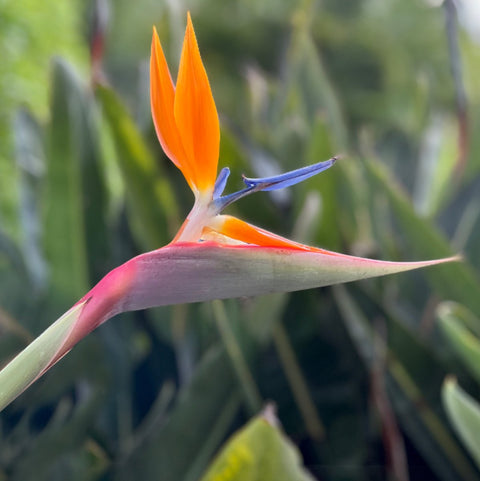








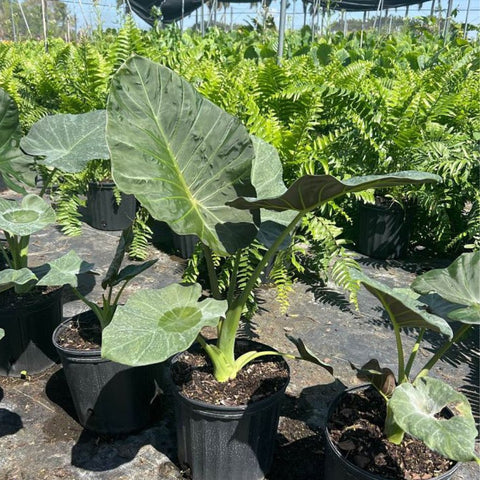


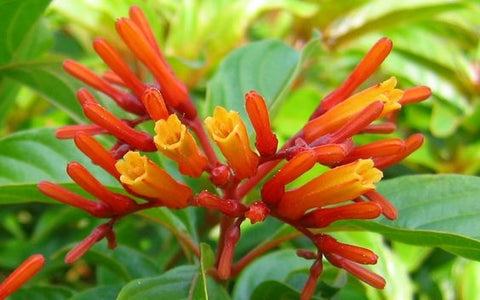




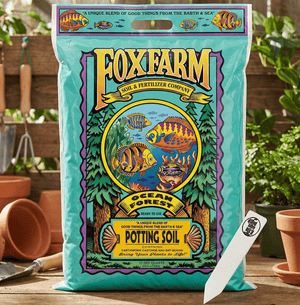




Comments (0)
There are no comments for this article. Be the first one to leave a message!